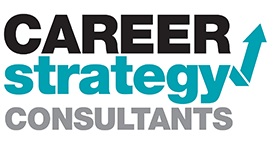Building a Diverse Workforce: Strategies for HR, Staffing, and Recruiting Professionals


In today’s globalized world, building a diverse workforce is not only a moral imperative but also a business necessity. A diverse workforce brings a wide range of perspectives, experiences, and skills, which can lead to increased creativity, innovation, and better decision-making. However, achieving diversity in the workplace requires deliberate effort and thoughtful strategies. In this blog, we will discuss strategies that HR, staffing, and recruiting professionals can utilize to build a diverse workforce.
Broaden Your Sourcing Strategies
Strategy: Diversify your sourcing strategies to reach a wider pool of candidates. This may involve using job boards that target underrepresented groups, attending diversity-focused career fairs, and partnering with organizations that promote diversity and inclusion.
Benefit: By broadening your sourcing strategies, you can attract candidates from diverse backgrounds and increase the diversity of your candidate pool.
Implement Blind Recruitment
Strategy: Implement blind recruitment practices, such as removing names, photos, and other identifying information from resumes and applications. This can help reduce unconscious bias in the screening process.
Benefit: Blind recruitment can help ensure that candidates are evaluated based on their skills and qualifications, rather than their gender, race, or other personal characteristics.
Offer Inclusive Benefits
Strategy: Offer benefits that are inclusive and cater to the diverse needs of your workforce. This may include offering parental leave for both mothers and fathers, providing health insurance that covers same-sex partners, and offering flexible work arrangements.
Benefit: Inclusive benefits can help attract and retain employees from diverse backgrounds and create a more inclusive work environment.
Provide Diversity and Inclusion Training
Strategy: Provide diversity and inclusion training for employees at all levels, including HR, staffing, and recruiting professionals. This can raise awareness of unconscious bias, promote inclusive behaviors, and foster a culture of diversity and inclusion.
Benefit: Diversity and inclusion training can help create a more inclusive work environment, where employees from diverse backgrounds feel valued and included.
Set Diversity Goals
Strategy: Set specific, measurable diversity goals for your organization. This may involve setting targets for the representation of underrepresented groups in your workforce, leadership team, or candidate pool.
Benefit: Setting diversity goals can help hold your organization accountable for its diversity efforts and drive progress toward a more diverse workforce.
Create Employee Resource Groups
Strategy: Create employee resource groups (ERGs) that provide support, networking opportunities, and professional development for employees from diverse backgrounds. ERGs can also serve as a valuable resource for HR, staffing, and recruiting professionals in their diversity efforts.
Benefit: ERGs can help create a sense of belonging for employees from diverse backgrounds, foster a culture of inclusion, and provide valuable insights for HR, staffing, and recruiting professionals.
Monitor and Evaluate Your Diversity Efforts
Strategy: Monitor and evaluate your diversity efforts regularly. This may involve tracking diversity metrics, conducting employee surveys, and seeking feedback from employees and external partners.
Benefit: Monitoring and evaluating your diversity efforts can help identify areas for improvement, measure the impact of your initiatives, and ensure that your organization is progressing toward its diversity goals.
Building a Diverse Workforce
In conclusion, building a diverse workforce requires a multifaceted approach that involves broadening your sourcing strategies, implementing blind recruitment, offering inclusive benefits, providing diversity and inclusion training, setting diversity goals, creating employee resource groups, and monitoring and evaluating your diversity efforts. By implementing these strategies, HR, staffing, and recruiting professionals can help create a more diverse and inclusive work environment that benefits both employees and the organization.

More Than Just Staffing
For Employers
For Individuals
